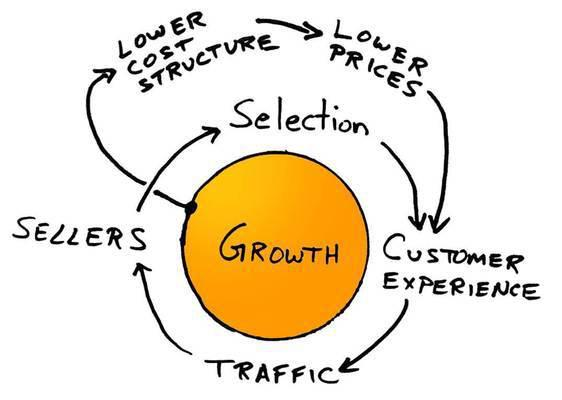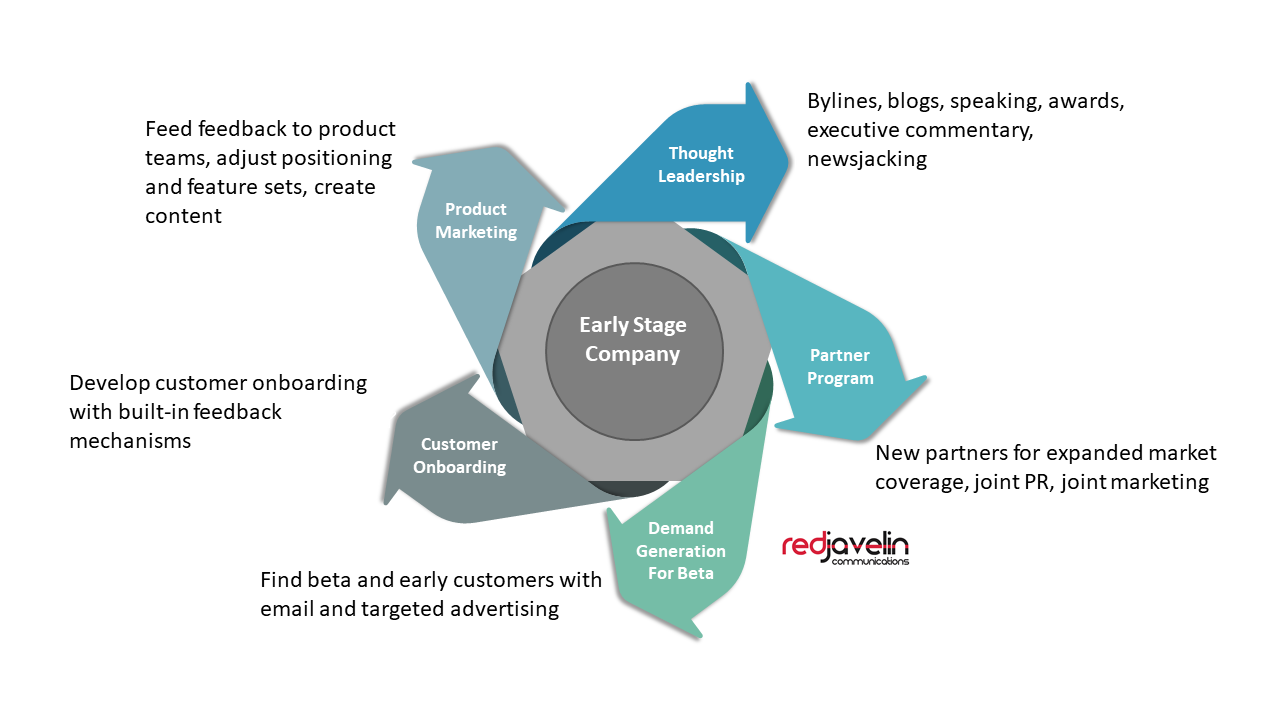
It is Q1 of a new year, and marketing teams are beginning to execute their plans for the new calendar year. Results are reviewed, plans are tweaked, and budgets are approved.
Frequently during this process, there is an emphasis on the results of a particular tactic instead of looking at the results of a set of integrated tactics focused on achieving a particular goal.
Strategy and tactics must go hand in hand for marketing to achieve success, but an effective marketing strategy must be in place before any set of tactics make sense. Having a purpose-driven strategy in place helps marketing teams align tactics and budget.
One of the most popular business strategies today is the Flywheel Effect. Why? Because it is at the core of Amazon's fantastic success. When this business strategy is applied to marketing, it creates momentum, a surround-sound effect that ultimately leads to success.
I recently introduced this concept in my article published in Forbes titled Two Exceptional Marketing Strategies That Produce Killer Results.
What is the Flywheel Effect?
Jim Collins originally coined the phrase "the flywheel effect" as a strategic business tool. According to Collins, "there's no single killer innovation, no solitary lucky break, no miracle moment; rather, the process resembles relentlessly pushing a giant, heavy flywheel, turn upon turn, building momentum until a point of breakthrough and beyond."
In other words, there is no silver bullet.
Let's break it down further. What is a flywheel?
A flywheel is an incredibly heavy wheel that takes enormous effort to push. Keep pushing, and the flywheel builds momentum. Keep pushing, and eventually, it starts to help turn itself and generate its own momentum. A flywheel is also a self-reinforcing loop made up of a few key initiatives. Those initiatives feed and are, in turn, driven by each other to build long-term momentum.
Amazon's Flywheel
One of the most famous flywheels is Amazon's "virtuous cycle." Each initiative in the flywheel is focused on the customer experience. Amazon's core initiatives revolve around a continuous improvement of the customer experience. A strong customer experience will lead to more shoppers, which will, in turn, bring more sellers. More sellers will lower costs and prices through competition while bolstering selection for customers. Lower prices and more selection will bring in more customers, and the cycle repeats itself.
Here is a picture of Amazon's Flywheel before the introduction of AWS. Source: Amazon.

Flywheel Effect Applied To B2B Marketing
The flywheel effect centers on generating momentum. When applied to marketing, it helps produce a surround-sound effect, creating momentum to generate leads and raise brand awareness.
Successful marketing is the result of programmatic activities, similar to pushing on a heavy flywheel. The best marketing results come from integrating marketing activities from different spokes of the marketing flywheel.
The marketing team should have multiple flywheels – one top-level flywheel focusing the organization on a single purpose and then program flywheels for each campaign developed throughout the year. For example, a top-level flywheel may focus on revenue generation, while program flywheels may focus on customer experience or brand awareness.
When companies focus all their marketing resources on revenue generation, they miss the value that brand awareness and thought leadership brings to achieving long term company goals.
The spokes on the marketing flywheel will differ in each organization depending targeted market, specific organizational goals, and where they are in the company and product life cycle. The key is to choose initiatives that complement each other to create a mini-ecosystem of initiatives that feed off each other and drive growth.
For example, an early-stage B2B technology company may identify thought leadership, product marketing, demand generation, and partner programs as spokes on their flywheel. Product marketing feeds thought leadership; thought leadership brings new partners, more partners create more market coverage for demand generation, demand generation brings in more customers that feedback into product marketing, and so on.

The New Marketing Flywheel
A recent survey by Marketo found that 86% of CMOs believe they will own the end-to-end customer experience. Today, the primary task of the CMO is to understand the customer buying journey from beginning to end and create programs to engage them at every stage of the journey.
The marketing flywheel will evolve to focus on the customer experience, similar to Amazon's flywheel. Still, the operational tactics will evolve as the buying journey becomes more defined, and the goals become more specific and measurable such as higher close rates or shortened sales cycles.
The Number One Reason You Need a Marketing Flywheel
A marketing flywheel keeps the tactics focused on a single measurable goal. It forces you and your organization to keep a single purpose in mind as they develop the tactics to support it.
You may be interested in the following:
How the Marketing Flywheel Gets You A Bigger Budget




